
Arquivo para a ‘Física’ Categoria
Simplification, idealism and pandemic
The idea that we can simplify phenomena that are complex seems a good way,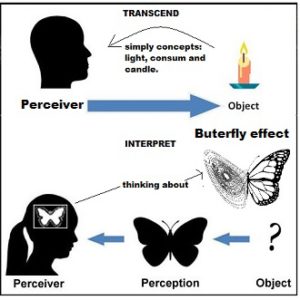 but to simplify what is by nature complex is to ignore the set of phenomena and interpretations that are within the phenomenon you want to analyze, whatever the nature.
but to simplify what is by nature complex is to ignore the set of phenomena and interpretations that are within the phenomenon you want to analyze, whatever the nature.
It is very different from the search for essence, the pre-Socratics sought to define what was the essential element of nature: fire, air, atoms, numbers, the Being, and thus defined the main pre-Socratic schools, when realizing that it was a broader phenomenon Socrates, which is read by Plato divides into two worlds: the world of Ideas and the sensitive world, however any attentive reader will not say that his school has simplified, it only paved the way for greater complexity.
The eidos of Plato and the pre-Socratic Parmenides is different from modern idealism, because in it there is so much the concept of form, for example, a chair whatever form it has its Being as being made to sit.
The Greek eidos from which the etymology of the word idea comes, has two accepted meanings, one that is a synonym for concept, but in a broader sense it is thought of as an expression, with the implicit principle of the idea of intentionality (*), and this concept it was only taken up in modern philosophy by Franz Brentano and later in Husserl’s phenomenology, who was his student.
Modern idealism, whose fundamental basis is Kant, although it has a common part to the Greek eidos, which is the idea that when studying the thing we have a projection of knowledge on it, reducing the idea that this study would be what characterizes the object of study (objectivity), and thus introduces a specific type of subjectivity, abstracting it from Being, this abstraction has in Hegel the apex.
Kant came to think that it would be possible to reduce all thought to a few concepts, it would be a great facilitator for study and thought, but his thinking resulted in an even greater complexity, and his simplicity fell into the subject x object dualism, which we suffer.
Every simplification leads to some kind of subjectivism or objectivism, even in religious terms, when studying The Human Phenomenon, Teilhard Chardin declared that Man is the complexification of nature, difficult for theologians and exegetes to accept, but I ask you the question: why did Jesus use of parables to explain things that apparently could be simple¬, because it isn’t.
Idealism is basically a “doctrine” that contains the belief that it is thought and not the physical world that is at the origin of all things, that is, the objective world, which we discover with the pandemic, and physics quantum already knew and actual cosmology is deepening, is that uncertainty is part of knowledge, and we are faced every day with a new phenomenon.
After all, one of the assumptions of Kantian idealism was the submission of nature, she rebelled.
This is the original novelty that idealists do not accept, and this novelty should give us back the humility, proclaimed by all, but as idealism gets stuck in duality, the error is the others, we knew the truth, not even science, nor faith could imagine the complexity of the phenomenon that all humanity lives, the first step to face the pandemic is this: I depend on the step of the Other, and that we can take steps together, it still seems difficult.
*Encyclopædia Britannica, Available in: https://www.britannica.com/topic/idea , Access in: 04/26/2020.
The changing worldview
The Ptolemaic model changed the Aristotelian worldview by creating a model of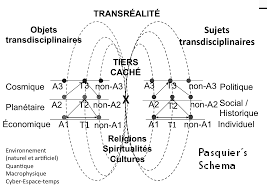 spiral movement for stars and planets known at the time, changing the worldview, but it was Copernicus who changed the view that took the Earth from the center of the universe and placed the Sun, this model helped the anthropocentric worldview by opposing the theocentric worldview.
spiral movement for stars and planets known at the time, changing the worldview, but it was Copernicus who changed the view that took the Earth from the center of the universe and placed the Sun, this model helped the anthropocentric worldview by opposing the theocentric worldview.
Galileo’s great controversy with the theological view was not the cosmological view, but the question of interpretation and biblical reading by the “common”, not by chance the first popular version was called “vulgate” and when deepening the biblical reading some interpretations exegetical activities have been set aside.
However, Galileo before the Holy Office actually affirmed “E pur si muove” (translating Italian and then moves) that today he could look at the whole universe saying “E pur tutto si muove”, everything is in motion and the dynamics no longer resist the classic worldview Being and Not Being, there is an excluded third party that can be thought of as Not Being is still Being, quantum physics and the string model indicate a third state, which is already used in quantum applications.
So the theoretical models and the idealistic worldview together with their universe model collapsed for some time and even the Standard Physics Model that explained particle physics seems in check with the studies of dark matter and energy that are nothing more than 95% of the universe.
The vision of seeing the world through a shock of opposition is gradually crumbling, when admitting an excluded third party (as the Sourbone professor Florent Pasquier calls it) admitting not a synthesis (the result of idealistic opposition, thesis and antithesis), but a third possibility that conjugates with the other two. It must affect the religious world, it is a great support for a time to unite minds and hearts to fight the world pandemic, and it can be the germ of great changes.
A biblical reference to the subject is the moment on the cross that Jesus cries out to God, who no longer calls him Father, the tradition says in the Aramaic language of his mother Mary, and feels separated from the Father, prays in the Trinitarian vision in that Jesus is also God, it is a paradox to separate from the Father.
Jesus on the cross is repeating Psalm 21 “My God, my God, because you abandoned me”, and it seems to be the cry of all humanity in the face of the pandemic, and it is also possible to read the “excluded third” where we learn that the opposition has time and the answer must be everyone’s.
However, the mystical explanation is precisely the third excluded, the human nature of Jesus is reconnecting it to the Father, if we want Teilhard Chardin’s noospheric vision to the Universe, the reading says that it was a great night.
Current cosmology is a worldview
Current cosmology is one that considers the universe as having a beginning, which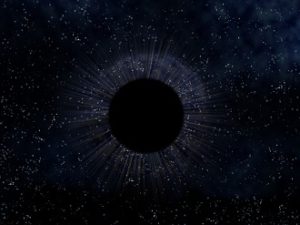 may be a multiverse or a bubble, and that expands in a constant between Hubble’s H0 and the rates measured from the supernovae, whose reconciliation may be the new theory of universe in a bubble launched by Lucas Lombriser whose article appeared in this month’s Physics B magazine.
may be a multiverse or a bubble, and that expands in a constant between Hubble’s H0 and the rates measured from the supernovae, whose reconciliation may be the new theory of universe in a bubble launched by Lucas Lombriser whose article appeared in this month’s Physics B magazine.
But this cosmology considers the mystery of the energy and dark matter that makes up 96% of the unknown universe and this puzzle modifies cosmology and also our worldview.
This cosmology postulates the idea that this dark matter does not interact with ordinary matter and the hypothesis something that “swallows” all known matter (called baryonic around it, including light) evolves to the idea that it has a high mass density and collapse of supernovae and their gravitational interaction has an effect on visible matter, stars, galaxies and clusters.
Of what it is made, it is certain that it does not have matter like the now stable model called Standard Physics, which we explored in the previous post, so it goes beyond this model and one of the most interesting theories is that of supersymmetry, which explores the concept of standard physics that each particle has a symmetric, just like bosons and fermions,
What this theory about dark matter proposes is that for every known boson there is an unknown fermion and vice versa, but there is a difference with the theory of antimatter, because antiparticles have opposite charges but the same mass and when they come into contact they produce energy, which would also explain dark energy.
Fermions as well as protons, electrons and neutrons, make up our material world and bosons are the ones that generate the forces of nature, the discovery of the Higgs boson or “God particle” was important because it made us understand the mass, while fermions explain the quantum state because two fermions occupy the same quantum state.
The fact of the existence of dark energy, more interesting than its mystery and presence in 70% of the universe (25% is dark energy) in addition to our ignorance is the fact that it is this “matter” that gives us a complete worldview of our universe , not only because it is dark because it is not visible, but also unknown.
James Gilles’ TED below, seen by more than 2 million people, explains the dark matter theory.
A complex and beyond universe
When the dimension of space and time came to be studied not as isolated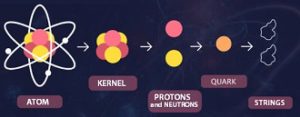 dimensions, but with this the gravitational force is no longer a consequence of the attraction of bodies, but a consequence of displacement in a curved space-time and thus there should be some “particle” that convey gravity between bodies.
dimensions, but with this the gravitational force is no longer a consequence of the attraction of bodies, but a consequence of displacement in a curved space-time and thus there should be some “particle” that convey gravity between bodies.
However, gravitons were not easy to observe, a theory called Kaluza-Klein raised the hypothesis that gravity seems weak from where we exist and we observe it, because it could pass through more than three dimensions in our time, and therefore, it dilutes .
In 1960 a group of physicists with the objective of unifying physics, developed the idea of string theory where constituent units of existing matter and the elementary particles of nature are tiny oscillating vibrating strings made of energy, which, varying the oscillation, creates the various types of matter known, the weak, strong, electromagnetic forces and gravity.
The great merit of the various characteristics of the strings was to perceive vibratory patterns in the particles and going on to indicate that there could be a messenger particle of the gravitational force called gravitón, which was recently proven and this changed the conception of Universe.
In a lecture presented by Edward Witten in 1995, the so-called Second String Revolution began, which discovered patterns called Type I, Type II (A), Type II (B), Heterotic-O, Heterotic-E, had a pattern of behavior called a coupling constant. this indicated that the particles came in pairs, for example Heteritóca; O and type II (A) was inversely proportional to heterotic-E and this to Type II (B), and the theory was essential to understand the strings.
Another factor that M-theory helped to understand the Universe was that it incorporated a completely new theory of dimensions, created the idea of eleven-dimensional supergravity, but an old doubt among astrophysicists still persisted and would change everything.
There were two constants of the expansion of the universe, which Hubble called H) and the measure from distant supernovae moving away (see the post), it was recently that Lucas Lombriser, said that it is like “If we were in a kind of gigantic” bubble “, so supernovae would have influences outside this “bubble” that we live in, due to even more enigmatic forces coming from “outside”.
A complete Universe model
The busy life and the buildings of the big cities prevent us from seeing the starry night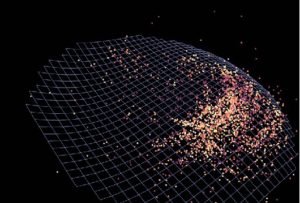 sky where you can count more than a thousand stars with the naked eye, and is the model of this universe already known.
sky where you can count more than a thousand stars with the naked eye, and is the model of this universe already known.
The whole that can be known hides a Whole that is all of creation and that had its Fiat or its Big Bang an initial moment and is gradually unveiled by research and the large telescopes built and that can now search beyond the Milky Way and many planets can be seen.
Even with all studies, what we know is only 5% of the composition of the universe, as shown by the figures of the Dark Energy Survey (DES), led by the American laboratory Fermilab, since 25% of the universe is dark matter and the remaining 70% are dark energy.
Since the first moment of the Big Bang, the universe has accelerated the pace of its expansion and the process has not slowed down, through the observation of a type of supernovae, end-of-life stars that collapse and emit an amount of brightness comparable to the center of the stars. galaxies, it is concluded that dark energy was the one that increases the speed of this growth process.
Dark matter, on the other hand, gets its name because it does not interact with photons (the particles of light, which are now definitely massless particles in the current model) and thus it is not possible to directly detect them through telescopes where the color and quality of the light makes them possible to be studied.
This dark matter is noted for its gravitational effect, that is, it has gravity and the visible bodies interact with it, and although we know that it exists, studies on the phenomena that happen to them and their interaction with other celestial bodies only started, studying their shapes and the distortions that cause their gravitational fields, which gives some information.
The study that covered approximately 300 million galaxies, 100,000 clusters and 2,000 supernovae, in addition to objects from our Milky Way and the Solar System.
In 2016 a detailed map of 43.00 galaxies was published reaching a distance of 380 million light years from the solar system, called the 2MASS Reshift Survey (2MRS) was presented at 218º. American Astronomy Society meeting in Boston, USA.
The Gaia satellite launched in 2013 by the European Special Agency (ESA) completed in 2018 its mission to register the stars and make a 3D map of the Milky Way (photo above), but the result according to Leah Crane, an astronomy expert was “The universe just got even more confused,” he wrote in the new Scientist magazine.

The order of the Universe
In classical antiquity the model that predominated was the Ptolemaic, which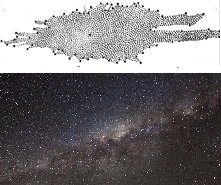 surpassed the model of Aristotle (384-322 BC) who thought that the Earth was the center of the universe, of course in addition to other models that considered the flat earth the Earth attached to a “ spherical shell ”and others.
surpassed the model of Aristotle (384-322 BC) who thought that the Earth was the center of the universe, of course in addition to other models that considered the flat earth the Earth attached to a “ spherical shell ”and others.
Other ideas emerged, but the model of Claudio Ptolemy (85-150) prevailed, until the model of Nicolau Copernicus (1473-1543) appeared in the late Middle Ages, but the Sun was still the center of the Universe, the important here is the mathematical and geometric “order” that he established, which influenced all modern science.
Our limit as a galaxy was proposed in ancient times by Democritus of Abdera (450-370 B.C.), seeing the bright low in the night sky, stated that it consisted of distant stars.
It was only in the 10th century, that the Persian astronomer known as Azophi (Abd al-Rahman al-Sufi), who observed the Andromeda Galaxy, describing it as a “little cloud” and was rediscovered by Simon Marius in 1612, and in 1610 Galileo Galilei confirms that the Milky Way was composed of several stars.
The model of the Milky Way was established by William Hershel in 1785 (drawing above) and until the discovery of the expansion of the universe, it was composed of galaxies and these by stars and planets.
The current cosmological models came from the hypothesis, today practically confirmed by the clergyman Georges Lamaitre (1854-1966), demonstrated by Edwin Hubble (1889-1953) and theorized and completed by the English physicist Stephen Hawking (1942-2018) and his student Roger Penrose (1931-).
It was from the study of density fluctuations (or anisotropic irregularities of the “matter”) which, analyzing the larger structures began to develop, the result is what is called barionic matter that condenses inside halos of cold dark matter , and these are the ones that formed galaxies as we see today, but dark matter and energy are still studies.
What we want to establish here is how our view of the world and matter also has implications for the view of life studies, and in the present case, of the structures of viruses and small organisms that can help science find solutions to epidemics and pandemics.
In a study that we are doing on publications in Social Networks, the scientist with the largest number of publications in the area of Social Networks is Carl a. Latkin, an infectious disease physician who is a member of the Center for Global Medicine, which is not by chance, our worldview and complexity has changed and it can help us to fight the pandemic.
Beyond the universe
We still live the belief of absolute space and time, the great discoveries of the physics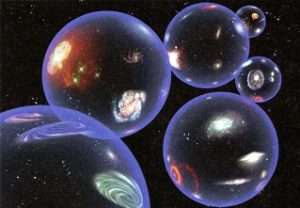 of our time have already proved the existence of the space-time dimension and a fourth dimension where many physical phenomena are explained, standard physics elaborated this, but now we can go beyond.
of our time have already proved the existence of the space-time dimension and a fourth dimension where many physical phenomena are explained, standard physics elaborated this, but now we can go beyond.
There was a discrepancy between the measures of expansion of the universe made based on the cosmic microwave background, the noise that remained from the first Big Bang and the expansion of red stars as the recent measurement made by in 2001 was 72 kilometers per second per megaparsec (km / sec / Mpc), with a parsec equivalent to 3.26 light years away.
The red stars are a stage of evolution of the suns when an event called helium glash occurs, in which the temperature rises about 100 million degrees and its structure is rearranged, which ends up decreasing its luminosity, but let us be calm take millions of years to happen. Initial measurements at Planck’s time were 67.4 km / sec / Mpc and recently a NASA team led by Wendy Freedman set it to 70 km / sec / Mpc which apparently averaged and reconciled the two measurements, but in practice they seemed two different phenomena.
The hypothesis of Lucas Lombriser, a physicist at UNIGE in Geneva, published in the next issue of Physics Letters B, shows the universe not only expanding but a bubble within another universe of lesser density, and certainly revolutionary Physics and will change our worldview.
The frightening and at the same time fascinating idea that we are in a bubble within a larger space only with the “matter” density (as we know it, which is called baryonic), may point to enigme new ones like black lowest holes and dark matter.
There is no blindness only in the flat earth, in the Copernican universe and in the worldview of a planet still rearranging itself with its internal social forces, the expanding universe is much larger and may be within a “cosmic broth” that until then was unthinkable, Lombriser he thought.
The idea of multiuniverses was launched by Stephen Hawking and now it seems almost real, see the video:
The Big Bang can be something else
And the Theory of Standard Physics, whose discovery of the Higgs particle recently in the Hadron collider made physicists vibrate, now everything seems to have another meaning.
particle recently in the Hadron collider made physicists vibrate, now everything seems to have another meaning.
There were two strong evidences about the Big Bang and the expansion of the universe since the first ball from which everything came out, and now it would be in a bubble of 250 million light years.
And now, this “our universe” where the density of matter is half of the rest of the universe, the hypothesis is Lucas Lombriser, theoretical physicist at the University of Geneva (UNIGE) and answers at what speed the universe expands, and reconciles the two previous averages of Universe Expansion.
The approach published in the journal “Physics Letter B”, resolves the divergence between two independent calculation methods that reached different values by around 10%, a statistical deviation that is irreconcilable, and does not need any new physical model.
According to the Big Bang theory occurred 13.8 billion years ago, the proposal was first made by the Belgian physicist and elder Georges Lemaître (1894-1966) and demonstrated for the first time by the American astronomer Edwin Hubble (1889-1953), observing that distant galaxies were moving away and putting them back together, one could calculate the time of the first explosion.
The expansion constant called H0 was meditated at a value of 67.4 according to data provided by the Planck space mission, which hypothesizes that the universe is homogeneous and isotropic, but now you can think of it with a bubble with matter density half of the entire universe, that is, at 13.8 billion light it exploded within a “other” less dense universe.
Lombriser said: “If we were in a kind of gigantic” bubble “, where the density of matter was significantly less than the density known to the entire universe, this would have consequences on the distances of the supernovae and, ultimately, on determining the H0”.
Thus, the 250 million-year constant for the bubble reconciles the values of the constant H0 for the Big Bang with the constant with the calculation of the spacing of the supernovae that has influence from the entire universe including the part of the bubble with half density, reconciling the two measures.
Aesthetics, culture and spirituality
The disorder that contemporary society advances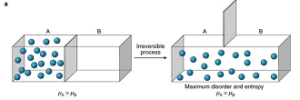 is not only economic, social and cultural, the aesthetic reflex is a society that aims to eliminate imperfect, pain and co-immunity (all types of immunity are sought at all costs, removing diversity nature), is the attempt of the absence of tragedy, in the cultural and aesthetic sense, of change, but life goes through death.
is not only economic, social and cultural, the aesthetic reflex is a society that aims to eliminate imperfect, pain and co-immunity (all types of immunity are sought at all costs, removing diversity nature), is the attempt of the absence of tragedy, in the cultural and aesthetic sense, of change, but life goes through death.
The result, contrary to the aesthetic that admits the tragedy, is precisely to move towards what it tries to eliminate, it is the society of death, of obscurity, while perfection is sought, the aesthetics of the perfect and straight, but they are contrary to nature, and the man who is part of it. The expansion of the corona virus, other viruses came as recently as the Asian flu, it is a show that we must live with this, recent discoveries in the glaciers of viruses that we did not know mean that they always existed and always had mutations.
But the transgenic mutations, of plants and animals that do not have any type of disease, have the paradox of being precisely that they generate potent diseases while destroying the natural diversity of the complex natural system, in fact, this is also the simplification.
At the social and religious level it means abolishing divergence, moving towards an identity that is nothing other than the denial of the Other, the diverse and the imposition of authoritarian systems, while at the same time making a discourse against individualism and authoritarianism, it favors its, see the Entropy law (picture).
The contradictory, as well as the different walks and continues to evolve in the midst of crises, because it knows that tragedy is part of life and can be overcome if viewed with concern and with the naturalness of those who lead life and society into the future.
The biblical passage in which he speaks of Jesus’ natural life, his preaching time was 3 years, and for 30 he lived a normal life, see the 10 to 1 ratio, the Pharisees and fundamentalists of our time live the opposite, is narrated by the evangelist Lucas (Lk 2,39-40):
“After fulfilling everything, according to the Law of the Lord, they returned to Galilee, to Nazaré, their city. The boy grew and became strong, full of wisdom; and the grace of God was with him ”. In fact, the law in this case was the laws of Judaism, that is, its relationship with the tradition of his time.
The complexity, the infinite and God
Except for areas such as art and sectors of astrophysics, the rest of scientific research is a prisoner of its own methodologies, designed to “maintain the balance of discourse by banishing contradiction and wandering; controlled or guided all developments of thought, but it itself stood out as impossible to solve. ”(Morin, 2008, pp. 80-81).
astrophysics, the rest of scientific research is a prisoner of its own methodologies, designed to “maintain the balance of discourse by banishing contradiction and wandering; controlled or guided all developments of thought, but it itself stood out as impossible to solve. ”(Morin, 2008, pp. 80-81).
It does not mean, of course, to destroy the balance and rationality of human thought, but to let it penetrate: in a sense of the simplest, the most elementary, the most ‘childish’: changing the basis of reasoning, the associative relations, and repulsive among some early concepts, but upon which the whole structure of reasoning and all possible discursive developments depend. And that is, by the way, the most difficult. ” (Morin, 2008, p. 82).
So we start from the “childish” idea of infinity, but which is the great scientific complexity of modern thinking as well, the immensity of the universe that is 96% mass and dark energy is still mysterious, but it may help us and finally the idea that in this infinity there is more than one energy, there is a living Being that precedes the universe itself can be another generous “childish idea”: God.
The eschatology that derives from these two fundamentals, a mysterious universe and a Being that precedes everything (in Christian eschatology is a Trinitarian God, who is also the ‘divine man’ Jesus), can give us a new dialogue in which what we think about matter. , spirit and science can change.
The essential relationship of God through Jesus with the world has as its crucial point the substitution of the metaphor of the lamb that Abraham killed in place of his son (the origin of God’s lamb comes from there), and is manifested by the evangelist John about John the Baptist ( Jn 1:29) who saw Jesus approach and said, “Behold the Lamb of God, who taketh away the sin of the world.”
The Josefa d’Obidos painting that we have already posted here by virtue of building a hologram installation is depicted above.

